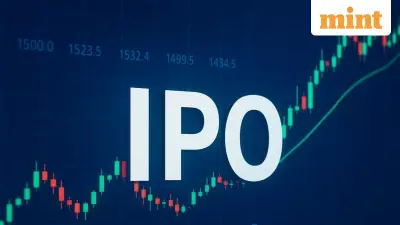
Investors in the US stock market are bracing for a potentially rocky end to the year, driven by growing doubts about imminent interest rate reductions from the Federal Reserve and concerns that the artificial intelligence sector, a major market driver, is now overvalued.
Market Slide and Rising Volatility
Despite a strong rebound on Friday, equity markets continued their downward trend over the past week. The benchmark S&P 500 index closed 4% below its late October record high, while the technology-heavy Nasdaq Composite experienced a steeper decline, finishing 7% down from its peak.
The market's exuberant rally since April, fueled by AI optimism and expectations of rate cuts, has now been replaced by caution. This shift has resulted in the most significant intraday price swings since April. On Thursday, both the Nasdaq and S&P 500 saw their largest single-day fluctuations since a market downturn triggered by a tariff announcement from former President Donald Trump.
The Cboe Volatility Index (VIX), often called Wall Street's fear gauge, remains above the critical level of 20, indicating persistent anxiety among investors. The futures curve for the VIX is unusually flat, suggesting that the market expects this volatility to continue in the coming months.
Reality Check for Valuations and Fed Uncertainty
Many analysts believe this market pullback was overdue. The S&P 500 had surged an impressive 38% from its low in April to its peak in late October. The recent decline marks the index's first 5% pullback in 149 days, a much longer period than the historical average of 77 days between such dips since 2010.
Valuations are also adjusting. The S&P 500's forward price-to-earnings ratio has decreased to 21.8 from 23.5 a month ago, according to LSEG Datastream. However, this valuation is still significantly higher than its 10-year average of 18.8, indicating that stocks remain expensive.
A major cloud hanging over the market is the uncertainty surrounding the Federal Reserve's next move. Until recently, a rate cut at the December meeting was considered almost certain. Now, market predictions show the odds are barely above 50%. Mixed signals from economic data, including a jobs report that showed accelerated payroll growth but also a four-year high in the unemployment rate, have left investors divided.
Tech Stocks and Potential Silver Linings
The recent sell-off has hit the technology sector particularly hard. Stocks like Oracle and Palantir Technologies, which were major beneficiaries of the AI trade, have seen heavy declines. Notably, even a strong earnings report from AI leader Nvidia failed to restore confidence, as its stock price fell afterward—a sign of skittish investor sentiment.
However, the year-end period has historically been positive for stocks. Data shows that December is the third-best-performing month for the S&P 500, with an average gain of 1.28% since 1928. Furthermore, when November posts declines, December has historically shown nearly double its average gains, offering a potential reason for optimism.
Some investors are already looking for opportunities amidst the turmoil. Due to the recent price drops, the information technology sector is starting to look more attractive for certain portfolios. Additionally, investors are often reluctant to sell winning stocks in December to avoid capital gains taxes, which could provide some market support.





